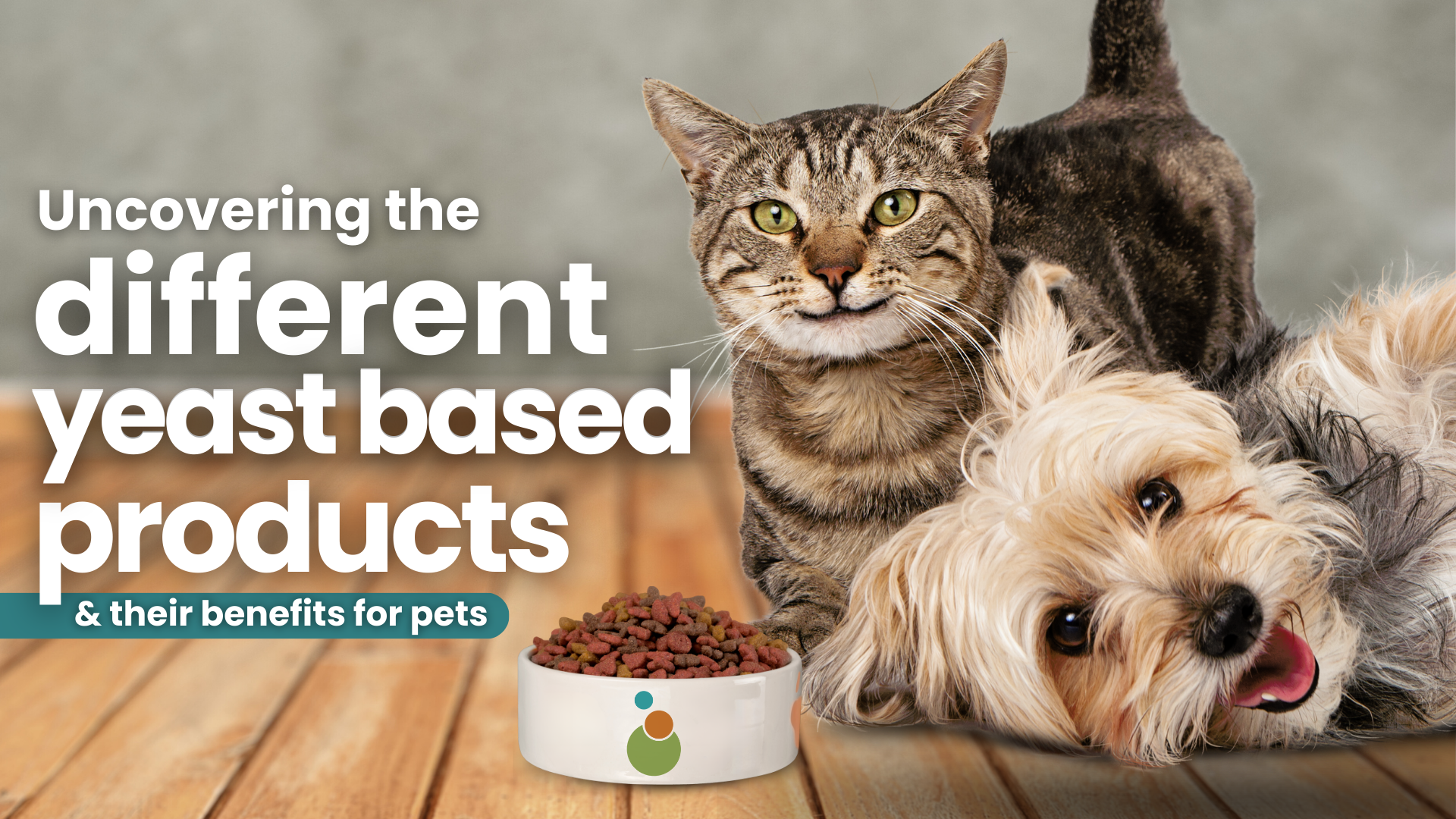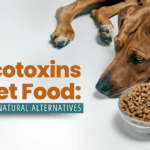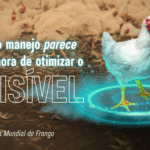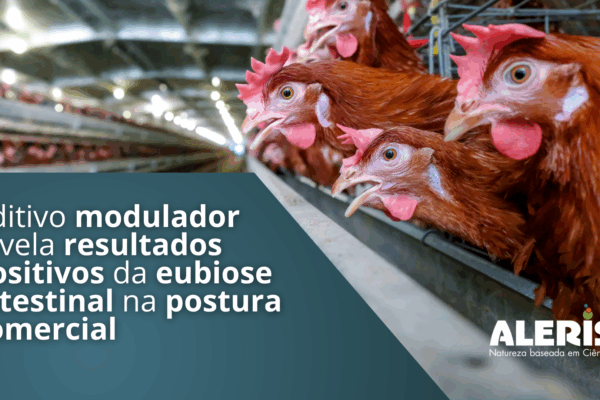Uncovering the different yeast-based products and their benefits for pets
Yeast-based products are widely used in the pet food industry due to their nutritional and functional benefits. It is essential for professionals in the field to be familiar with the distinct characteristics of yeast-based products to formulate more precise diets, taking into account health conditions and specific dietary needs. However, there are still some unclear concepts in this field.
Among the hundreds of existing yeast species, the most commonly used in the food industry is Saccharomyces cerevisiae, primarily employed in ethanol production, beer brewing, and other fermentation processes.
Yeast Cell Structure
Yeast is a unicellular organism composed of:
- A cell wall rich in mannan oligosaccharides (MOS) and β-glucans (both structural components), proteins, and lipids.
- Cytoplasm, containing common cellular structural components, proteins, free amino acids, and B-complex vitamins.
- A Nucleus, enclosed by a nuclear membrane characteristic of eukaryotic organisms (Figure 1).
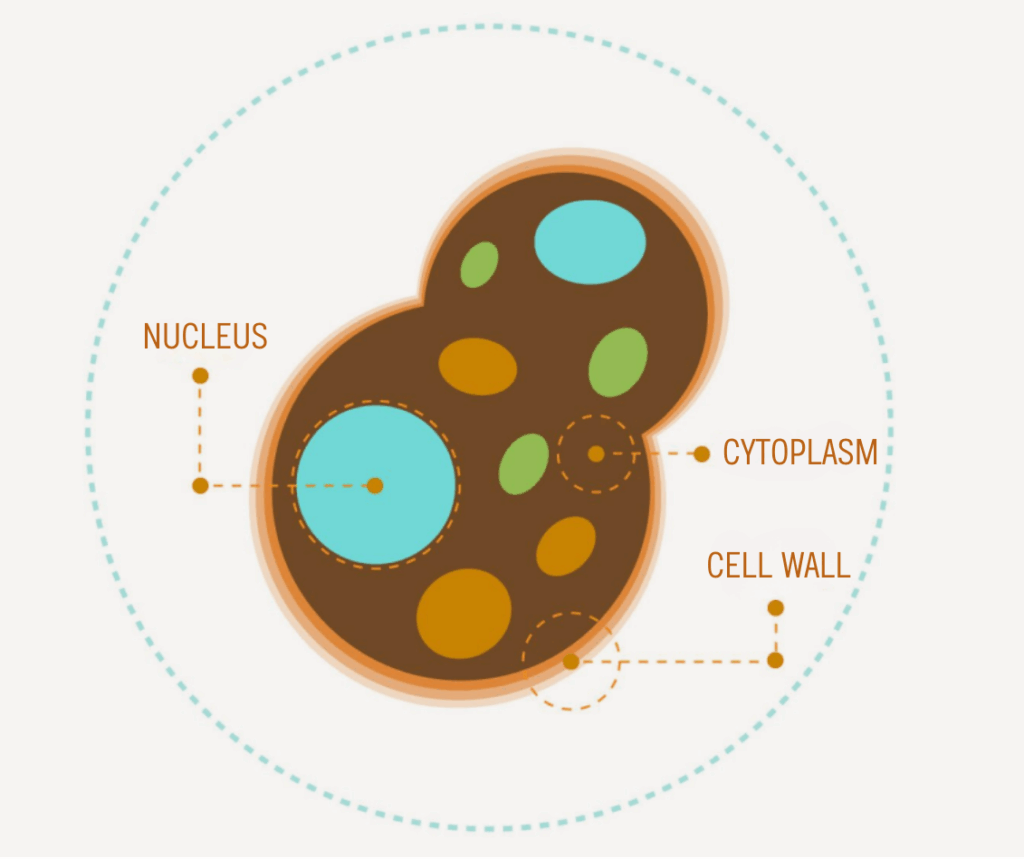
How Yeast is Obtained
There are three main yeast fermentation processes for use in animal nutrition, as illustrated in the figure below:
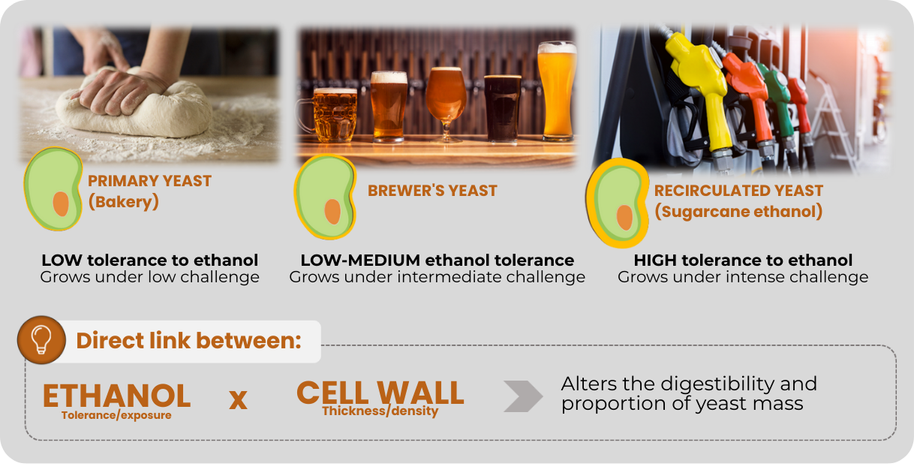
From these different processes, it is evident that the greater the challenge faced (e.g., a harsh growth environment), the greater the yeast’s need to adapt to adverse conditions for survival. As a defense mechanism, it increases its cell wall thickness, resulting in a high-quality product with nutraceutical purposes for companion animals.
It is well-known that production techniques have been progressively refined and adapted to ensure the production of yeast with higher nutritional quality and better utilization by animals, especially those derived from ethanol fermentation. However, the main challenges in obtaining yeast-based products are related to ensuring adequate ethanol production yield (biomass) and optimal metabolic activity to avoid contaminants in the final product. This can be achieved through strict quality control during yeast processing, particularly concerning physicochemical parameters: medium composition, impurity separation, temperature, pH, agitation, and optimal nutrient concentration. Thus, not all yeast-based products are the same.
In general, the main yeast-based products obtained from ethanol production are: inactive yeast, autolyzed yeast, and yeast cell wall.
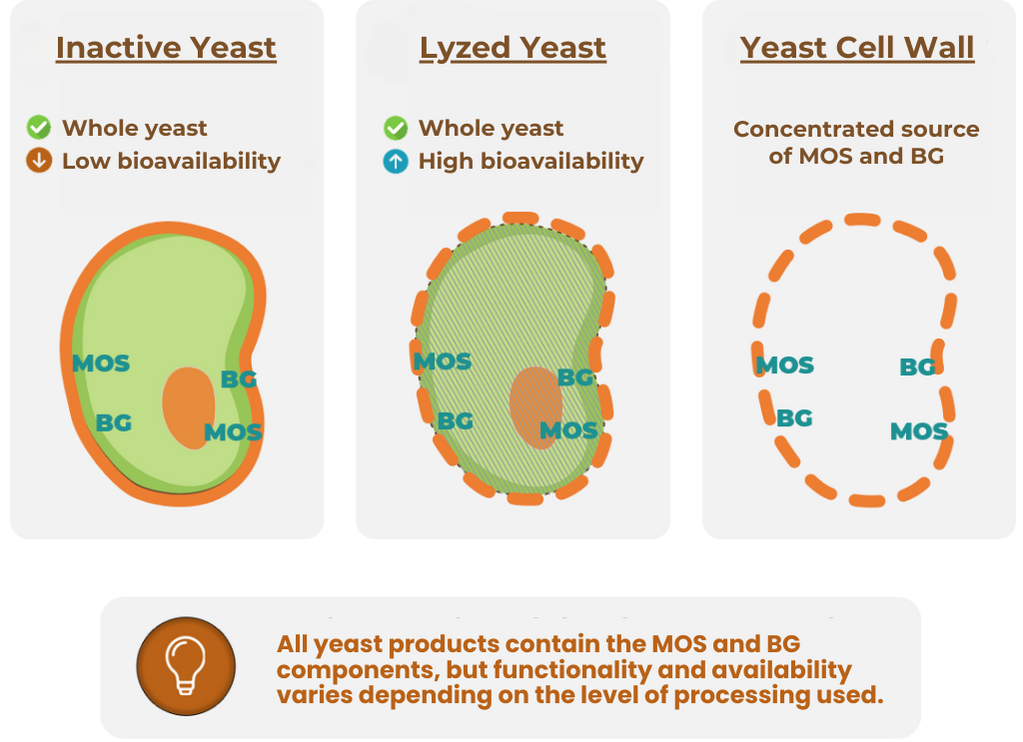
Inactive Yeast
Inactive yeast, also known as dried yeast, is obtained through a stress process, causing it to consume its own energy reserves (carbohydrates) and proportionally increase cellular protein concentration. It has an intact cell wall and is widely used in pet nutrition due to the beneficial effects of its bioactive components on the gastrointestinal tract, supporting digestive and immune health. It also has a high protein content and is highly palatable to companion animals.
Autolyzed Yeast
To maximize the utilization of cellular nutrients present in inactive yeast, the autolysis process breaks down the cell wall, increasing the availability of proteins, amino acids, nucleotides, polysaccharides, and glucomannans.
This process must be slow and strictly controlled. Purification of this type of yeast results in a product with strong synergy between cytoplasmic components and the cell wall, without intracellular leakage, which would compromise its nutritional profile.
Therefore, autolyzed yeast is considered a rich source of highly digestible proteins, along with high bioavailability of mannan oligosaccharides (MOS) and β-glucans, which directly contribute to pathogen agglutination and modulation of innate immune responses, playing an important role in intestinal functionality and pet health.
Yeast Cell Wall
The yeast cell wall is primarily composed of polysaccharides, such as beta-glucans and mannans, as well as proteins and fiber. This yeast fraction is known for its prebiotic properties, promoting the growth and establishment of beneficial bacteria in the pets’ gastrointestinal tract.
After autolysis, the biomass undergoes fractionation by centrifugation to separate the cell wall from the extract. It is then dried using spray-drying technology. To ensure quality and continuous process control, successive centrifugations are performed until the purified cell wall is obtained as the final product, which has a lower protein content compared to the other yeast-based products mentioned.
Among the main components of the yeast cell wall, MOS can adhere to opportunistic pathogenic bacteria in the animal’s intestine, preventing colonization or modulating and priming the immune system for protection against infections. MOS can also bind to the intestinal mucosa, forming a protective physical barrier that prevents colonization by harmful microorganisms, supporting health and well-being.
Beta-glucans belong to the class of biological response modifiers, aiding normal cells in producing chemical messengers that enhance the immune system’s ability to identify, modulate, and produce defense substances. They are also associated with reduced inflammation in pets.
Thus, yeast cell wall provides significant benefits for pets, helping to strengthen the immune system and support healthy digestion.
Conclusion
Yeast-based products offer a wide range of nutritional and functional benefits for companion animals. The choice between different yeast categories will depend on the animal’s specific needs and dietary formulation goals. It is crucial for professionals to understand the differences between these products to recommend the most suitable option based on each client’s specific requirements.
Bibliography
Ahiwe, E. U., Abdallh, M. E., Chang’a, E. P., Al-Qahtani, M., Omede, A.
A., Graham, H., & Iji, P. A. (2019). Influence of autolyzed whole yeast and yeast components on broiler chickens challenged with salmonella lipopolysaccharide. Poultry Science, 98(12), 7129–7138. https://doi.org/10.3382/ps/pez452
Ghiraldini, J.A. e Roseli, C.E.V. (1997). Caracterização e qualidade de levedura desidratada para a alimentação animal. In: Simpósio sobre tecnologia da produção e utilização da levedura desidratada na alimentação animal. Anais. CBNA, Campinas., 27-49.
Morales-Lopez, R., & Brufau, J. (2013). Immune-modulatory effects of dietary Saccharomyces cerevisiae cell wall in broiler chickens inoculated with Escherichia coli lipopolysaccharide. British Poultry Science, 54(2), 247–251. https://doi.org/10.1080/00071668.2013.782386
Sgarbieri, V.C., Alvim, I.D., Vilela, E.S.D., Baldini, V.L.S., Bragagnolo, N. (1999).
Produção piloto de derivados de levedura (Saccharomyces sp.) para uso como ingrediente na formulação de alimentos. Brazilian Journal of Food Technology, Campinas, 2(5), 119-125.
Smith, P. M., & Kitts, D. D. (2015). Nutritional yeast and their biological effects beyond nutritional contents: A review. Food Reviews International, 31(2), 147-171.
Oliveira, G., Pinheiro, L., Nascimento, C., Oliveira, R., Camargo, J., & Bracarense, A. (2017). Yeast cell wall extracts supplementation as a growth promoter for broiler chickens. Poultry Science, 96(8), 2729-2736.
Janczyk, P., Halle, B., Souffrant, W. B., & Bessa, R. J. B. (2009). Effects of dietary yeast (Saccharomyces cerevisiae) on acute response of the immune system to oxidative stress in cats. Journal of Animal Physiology and Animal Nutrition, 93(2), 214-221.









